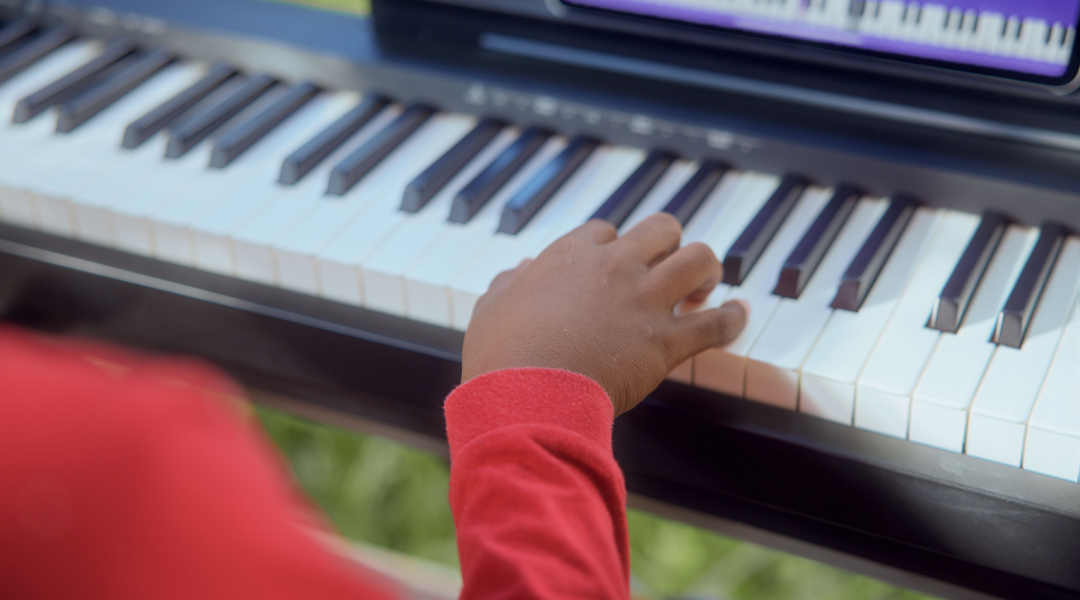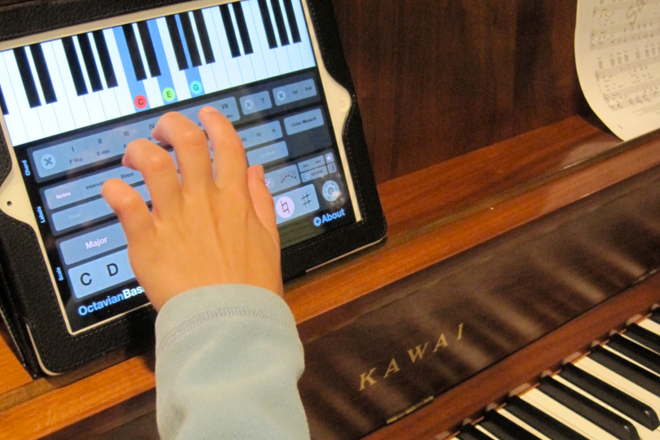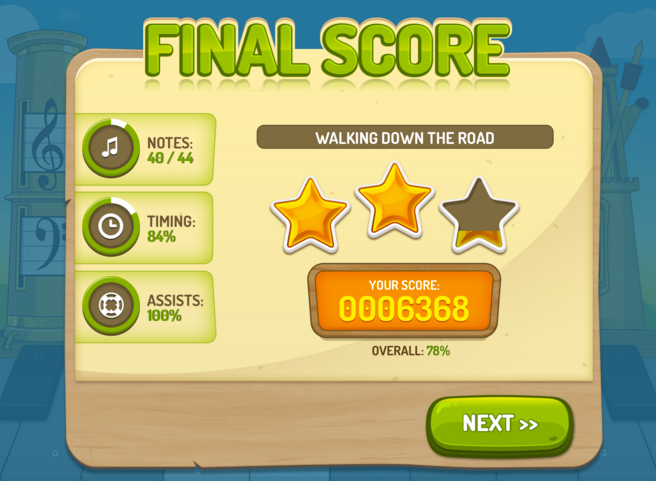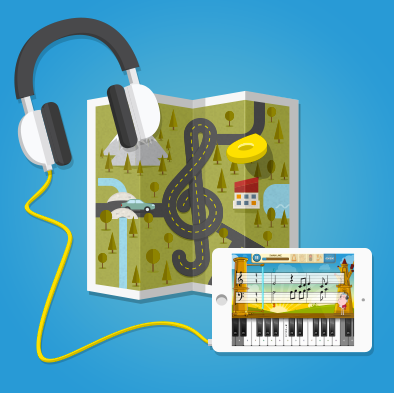How to Play Piano – A Beginner’s Guide
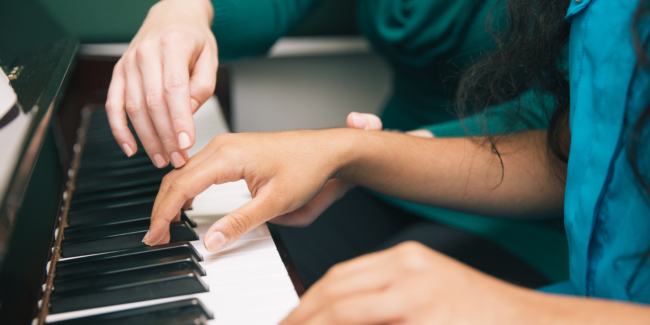
Searching for tips on how to play piano for beginners? You’ve come to the right place!
The following are some of the best piano tips we recommend to beginners. Not only will they help you start learning piano techniques right away – they make it a whole lot of fun too.
Piano beginner fundamentals: start here.
Getting your posture right is crucial when you learn to play the piano as a beginner.
Playing the piano relies on your ability to reach all 88 keys. If you don’t practice the correct posture, you’ll feel pretty stiff while playing and sore long after leaving the bench. Perfecting your posture will encourage you to keep practicing and help to prevent carpal tunnel syndrome.
Sit up straight on the bench at the very center of the piano. Place your feet flat on the floor, relax your shoulders, and bend your arms gently at the elbow.
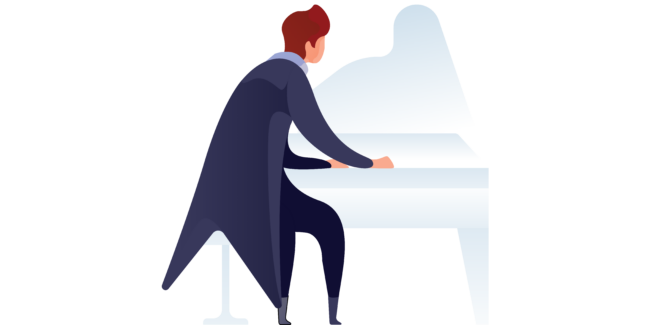
Keep an eye on your fingers and your wrists as you’re practicing. Concentrate on keeping your wrists even and not letting them droop towards the keys, as that can put a lot of pressure on your tendons, causing them to become sore and stiff. Keep your fingers relaxed and loose, so they’re limber enough to hit each key quickly.
Once you settle in and feel comfortable with your posture, you can get to know the keys. It’s best to start small. Concentrate on a few keys at a time – there’s no need to memorize all 88 from the very beginning.
Start by locating Middle C. It can be found in the center of the keyboard, but that doesn’t mean you have to start counting keys! It’s much better to practice locating the right keys by seeing them concerning each other.

At the center of the keyboard, you can see two sets of three black keys on either side of a set of two black keys in the middle. Middle C is the white key left of those two black keys.
Basic skills for making music.
Let’s begin mastering some basic piano skills. Learning the piano for beginners means spending a fair amount of time practicing scales. Although scales aren’t the most exciting things to play on the piano, they can help you familiarize yourself with the notes on the keyboard, making it easier to play songs when the time comes.
The five-finger scale is essential to piano playing, so it’s the best place to start. Remember how to find Middle C? Place your right thumb on Middle C, resting your index finger on the following white key. Then, let each finger rest on each of the following keys. Play each key one at a time, from C to G, and play the scale in reverse, beginning with your pinky finger to press G.

You have just played your first scale! The Middle C five-finger scale is only the beginning! There are many scales you can practice that help you get to know all of the keys and help you practice proper finger placement.
As you get more confident playing scales, try imagining different moods you want to convey as you play those scales. For example, try hitting the keys with more force to bring power and energy. Or, hit the keys very softly if you want the scale to sound like a lullaby.
Music theory in a nutshell.
Sitting down at the keyboard is the fun part of playing the piano, but learning some music theory is also essential. It includes identifying common chords and triads, but there’s no need to get ahead of yourself yet.
Let’s start with the basics of reading music and a few terms to familiarize yourself with:
- Grand Staff – Here’s where you will read musical notes from. Within the grand staff, you have the treble and bass clef.
- Treble Clef – Pianists generally play the treble clef with their right hand, which accounts for the higher-sounding keys.
- Bass Clef – Pianists generally play the bass clef with their left hand, which accounts for the lower-sounding keys.
From bottom to top, the treble clef has the letters FACE between the lines and EGBDF on the lines, and the bass clef contains ACEG between and GBDFA on the lines.
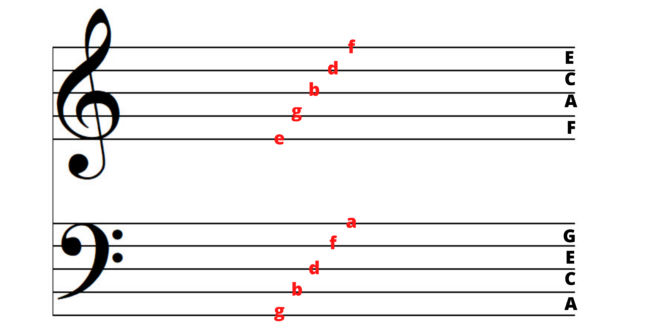
Although the letters differ depending on whether you read treble or bass notes, they make more sense when you put them together. When you combine the notes between the lines and on the lines, they follow the musical alphabet in order.
Memorizing these notes takes time, so don’t be too hard on yourself. Slow down your practice so you can hit each note with confidence.
Once you can read music, you can apply concepts that transcend piano.
1. Harmony
Harmony includes dissonant harmonies and consonant harmonies. Dissonant harmonies sound jarring and harsh, while consonant harmonies sound smooth and pleasant. You can use both to make a song sound more complex and interesting. Combining harmonies allows for the release of tension and lets the player evoke a wide range of emotions.
2. Melody
Melody includes pitch, as well as conjunct and disjunct motion.
Pitch is the frequency of a musical note that makes it sound high or low. A note is a pitch with a name and uses the same frequency every time you play it.
The melody of a song relies on its motion. Conjunct motions are small, where the musician goes from one scale degree to the next by the following position on the grand staff. These notes are next to each other on the piano.
Disjunct motion proceeds conjunct by leaping to notes at intervals larger than a second. These keys are spread far apart on the keyboard.
3. Rhythm
Rhythm includes beat, tempo, syncopation, and meter.
- Beat – The beat is what keeps time in a song. When you clap along to a song, you’re clapping along to the beat.
- Tempo – The tempo refers to the speed of a song. It includes the terminology above the musical notes. For example, allegro means to move fast, while adagio means to move slowly with great expression.
- Syncopation – Syncopation occurs on weak parts of the beat. Songs with syncopation can be easy to sing along to, but they can be challenging to play on an instrument and difficult to transcribe.
- Metre – Metre has a numerical value next to the treble and bass clefs on the grand staff. Simple meters include duple meters, like 2/4, triple meters, like 3/4, and quadruple meters, like 4/4. There are also compound meters which are less common, indicating the number of beats as a multiple of three instead of two or four.
The best piano tips for beginners.
One of the best piano tips for beginners is simply to practice. But what does that mean exactly?
- Practicing means knowing what you must practice and making time to do it. If you’re not a scale master yet, make time to practice the scales over and over again.
- Try penciling in each note you’ll play on the sheet music to practice reading music.
- Prevent cricks in your neck by sitting up straight the next time you sit down at the keyboard.
Start playing piano today.
Wondering when you can start playing music? Songs are a great way to practice all of the skills you are learning!
Songs like “Chopsticks” and “Heart and Soul” are great tunes for beginners. Additionally, some other songs can be fun to play if you’re just learning, like:
- “Blinding Lights” by The Weeknd
- “My Universe” by Coldplay and BTS
- “Imagine” by John Lennon
- “All Of Me” by John Legend
Piano lessons anywhere and anytime.
This article is a great place to start if you want to learn how to play the piano, but it only scratches the surface of the skills you’ll want to practice and develop to play the piano with confidence.
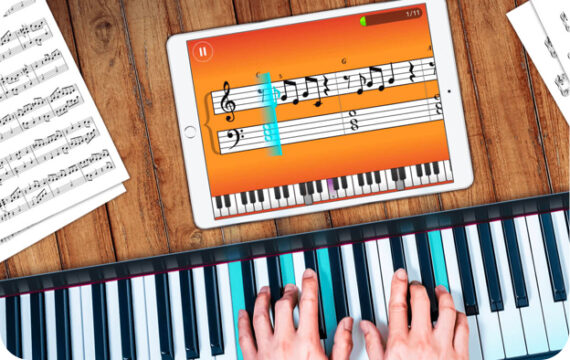
If you’re looking for an interactive, personalized way to learn to play piano for beginners, check out Simply Piano.
You have to answer a few questions to start, and we will personalize a learning plan just for you. Over 85% of our beginners learn to play their first song with both hands in just eleven days!






